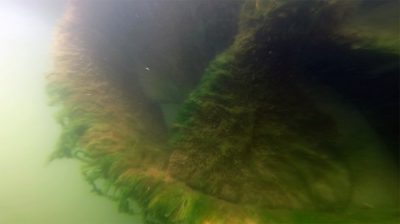Configure Now
Items in Your Cart0
0Items in Your Cart
Start building your packageShop Now
Last April we posted a blog that explored the prime reasons ship owners and operators should inspect their hulls on a regular basis. From paint jobs to contraband inspections, monitoring the status of a vessel’s hull is important to ensure the integrity of the structure and to reduce damage and the costs of wear and tear over time.
To read about the top reasons hull inspections are important follow the link here.
 Biofouling is the accumulation of organisms, plants, algae, or animals on a wetted surface (like a hull). Over time, fouling organisms build up and can compromise the performance of the ship. Even worse, a contaminated hull can carry foreign species from one location to another.
Biofouling is the accumulation of organisms, plants, algae, or animals on a wetted surface (like a hull). Over time, fouling organisms build up and can compromise the performance of the ship. Even worse, a contaminated hull can carry foreign species from one location to another.
To work against invasive and destructive species, anti-fouling paint has been developed to coat the hulls of vessels as they make their way from country to country, transporting goods, materials and food. Anti-fouling paint is a specialized coating applied as the outer layer of paint on a ship’s hull to reduce the build-up of fouling organisms and in some cases to act as an anti-corrosion method as well. While helpful in reducing fouling on a ship’s hull, anti-fouling paint does also bring about some environmental concerns due to the components in the paint’s material.
Regardless of where one stands on the merits and ecological implications of anti-fouling paint, exterior hull surfaces (anti-fouling or not) need to be inspected regularly to ensure that they are holding up and that organisms are not collecting on the hull. Over time, painted surfaces will corrode and need to be reapplied.
A Deep Trekker underwater drone, such as the DTG2 ROV or DTX2 ROV (for larger vessels), will allow ship owners and operators to monitor and assess the status of their hulls on a daily basis to combat against the buildup of organisms on the hull and will reduce their operational costs. In situations where anti-fouling paint is not used (which may become the case for all ships in the near future due to environmental regulations) the importance of regular inspections only increases.
Use ROVs to lower costs of inspecting your hull's paint job
Once biofouling organisms have built up on the hull, removing the species and cleaning the bottom of the ship can be a costly endeavor. The vessel may need to be dry-docked or may require sub-surface cleaning by divers to remove the critters living on the hull.
While in-water cleaning might seem like a viable solution, there are major ecological debates regarding whether it should even be allowed. Not only does hiring a dive team add cost, there is a widespread concern regarding the materials used to clean the hull and the toxins released into the water. To read more about the concerns with both anti-fouling paint and in-water cleaning check out this great article by ECO Magazine.
Sources Used:
Anti-fouling Paint – Wikipedia
Controlling Marine Fouling with Antifouling Paints and Underwater Hull Cleaning – PaintSquare
November 3rd, 2025
At REPMUS 2025, Deep Trekker’s ROVs validated real-world mine countermeasure capabilities...
July 5th, 2025
Deep Trekker’s new Tampa facility brings faster ROV repairs, in-stock parts,...
June 11th, 2025
Equipped with sonar and DVL, Deep Trekker ROVs are helping SES...